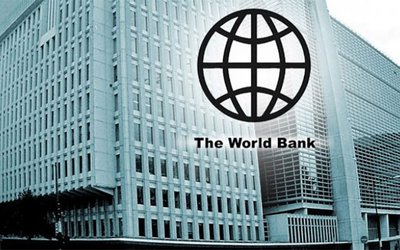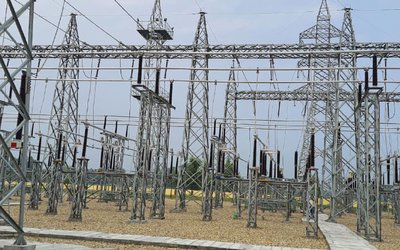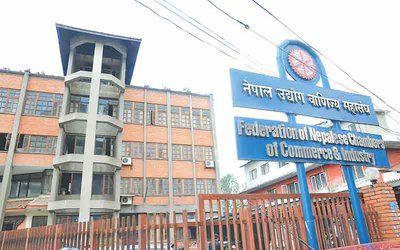
Nepal has been passing through a critical political transition with rampant disruptions in several sectors of growth, the Asian Development Bank has projected that Nepal has adequate space to ramp up its borrowing to post higher economic growth in the coming years.
If the present economic health continues and the country increases the spending in earthquake relief, the growth will be higher and will occur without jeopardizing fiscal sustainability.
Although Nepal’s economic growth is dismal in this fiscal year due to inadequate rainfall and political instability, the country can continuously post economic growth rate of seven per cent per annum for eight years from fiscal year 2017-18.
“Given that Nepal needs to borrow a higher amount, both internally and externally (cumulatively about 9% of GDP over the next five years) to finance reconstruction projects, and tax revenues being barely sufficient to finance recurrent spending, Nepal’s fiscal policy will need to be more prudent yet expansionary in the coming years,” said the report. “Nepal has a very low fiscal deficit to start with when compared to regional economies, and low and lower middle income economies. In FY2013 and FY2014, robust revenue growth (including grants) along with under spending of the capital budget resulted in a fiscal surplus. This is not ideal for a low income country with huge infrastructure deficit that is constricting overall economic potential.”
According to the report, Nepal needs about 8% to 12% of GDP in annual investment in infrastructural till 2020 to close its infrastructure deficit, accelerate inclusive economic growth, and create adequate new jobs.
Hence, increasing borrowing to a fiscally prudent level to financing productivity-enhancing capital investment will be of paramount importance.
The IMF’s latest debt sustainability analysis shows that Nepal’s risk of debt distress continues to be low, mainly attributed to ‘prudent fiscal policy and low capital budget execution’. Public external debt stock and servicing ratios are within the policy dependent indicative thresholds as government borrowing has mostly been on concessional terms. The analysis shows that debt dynamics remain resilient to standard shocks (shocks to GDP growth, exports, non-debt creating flows [captures a remittance shock], a combination of these shocks, and onetime 30% nominal depreciation shock).
Broadly, fiscal sustainability over the medium to long term can be assessed by looking at the real interest rate, exchange rate, inflation, GDP growth, and the debt stock.
At present, Nepal’s debt stabilizing primary balance is about -1.2%, which means that it is the primary deficit required to keep debt to GDP ratio constant at FY2015 level (25.6% of GDP). It assumes a 10% depreciation of the currency against the US dollar (which then increases outstanding debt payment), average real interest rate on total government debt stabilizing at FY2015 level (weighted average of real interest rate on domestic and foreign currency debts), and GDP deflator (proxy for inflation) and GDP growth averaging 7.5% and 5.0%2, respectively, over the medium term.
Alternatively, it indicates that if Nepal judiciously utilizes borrowed money on productivity-enhancing investment projects, it has ample fiscal space (mostly borrowing on concessional since Nepal’s weighted average real borrowing rate — which stands at a negative of 0.1 per cent — is much lower than the GDP growth rate, a small primary deficit will not jeopardize fiscal sustainability, says the ADB report. Also, public debt of around 40 per cent of the GDP is considered fiscally sustainable.
Nepal’s outstanding public debt has been declining over the years, reaching 25.6 per cent of the GDP in the last fiscal year, which ended on July 16.
The declining stock of public debt generally indicates sound public debt management. But this has come at a cost of low capital expenditure, which does not bode well for a country with huge infrastructure deficit, especially in energy and transport sectors.
In the last fiscal year, capital spending stood at 3.8 per cent of the GDP, as against the estimate of 5.5 per cent of the GDP made at the beginning of the year.
One of the reasons for low capital spending or fund absorptive capacity, according to the ADB, is lack of project readiness, such as delay in detailed project design, land acquisition, establishment of project management offices and preparation of procurement plans.
Also, delay in budget approval, budget release and execution of procurement related processes, coupled with weak planning and implementation capacity have affected capital spending.
The Asian Development Bank (ADB) estimates the country’s economic growth to stand between 4.5 per cent and 5.5 per cent in the current fiscal year. These targets are lower than the government’s estimate of six per cent.
The ADB has said higher growth would largely depend on agricultural output and spending on reconstruction of infrastructure damaged or destroyed by the earthquakes of April and May.
The ADB estimates inflation to stand in between 8.5 per cent and 9.5 per cent this fiscal. The government’s inflation target stands at 8.5 per cent.
Raju Tuladhar, in his Accelerating Post-earthquake Reconstruction, said Nepal Post-disaster needs assessment said Nepal is in the right track despite delay in the formation of National Reconstruction Authority. Nepal has already completed certain steps, including International Conference on Nepal’s Reconstruction, FY2016 budget focused on reconstruction and FY2016 monetary policy supported reconstruction.
“The ‘build-back-better’ principle, Inclusiveness—core of reconstruction programs, an effective institutional setup, capacity building of EA/IAs and good governance, strong government leadership in aid coordination, reconstruction and development programs should go hand-in-hand,” said Tuladhar.
One of the problems of Nepal is too slow a capital spending -- in Chandan Sapkota's words, it is too slow and too low. "One-fourth of total spending was made in the last month; 45% in last three months and 44% of actual capex in the last month; 63% in last three months," said Sapkota in his presentation. He also pointed out that the revenue mobilsation slowed but remains robust.
Late and subnormal monsoon, scope and pace of post-earthquake reconstruction, political uncertainties and supply disruptions, net migration, remittance inflows and service sector growth were other areas to turn to. Amidst a grim political scenario, with low capital expenditure in the previous year, ADB’s recently released outlook has shown some positive indications.
- IME GROUP: Expands Into Paper Industry
- Mar 24, 2025
- CPN UML: Instigated By India
- Mar 23, 2025
- ADB’S CHIEF ECONOMIST: Nepal Reduces Poverty
- Mar 11, 2025
- FM DR. DEUBA: A Successful Visit
- Mar 11, 2025
- MD GHISING: Target Of Personal Grudge
- Mar 09, 2025














